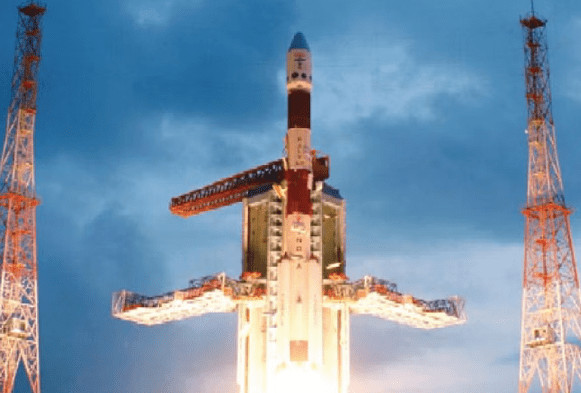The Indian Space Research Organisation (ISRO), ranked as the world’s sixth-largest space agency, has made remarkable strides from its early days of transporting rocket components on bicycles and satellites on bullock carts to the remarkable achievement of sending an orbiter to Mars on its maiden attempt and aspiring to become the world’s first nation to land near the moon’s South Pole.

All About ISRO Being Globally Famous
In the process, ISRO has disrupted the space exploration landscape by accomplishing missions like Mangalyaan and Chandrayaan on incredibly modest budgets of $73 million and $75 million, respectively, which is less than what Hollywood spent on science fiction blockbusters like Gravity ($100 million) and The Martian ($108 million).
The ethos of frugality and practicality that permeates ISRO’s approach can be traced back to its humble beginnings. Just as global giants like Apple and Microsoft had modest origins, Vikram Sarabhai, often regarded as the father of India’s space program, initiated a small space laboratory in the garage of his Ahmedabad residence. ISRO formally came into existence as the Indian National Committee for Space Research (INCOSPAR) on August 15, 1969.

Now, 54 years later, ISRO is rapidly evolving into an agency that fosters one of the world’s largest space technology ecosystems. Over these years, it has nurtured and incubated numerous companies, and the sector has reached a critical mass, boasting over 400 firms poised to embark on ventures such as launch services, satellite communications, and space tourism.
All of this growth has been achieved while adhering to the principles of frugality and pragmatism. ISRO’s Chairman, S. Somanath, emphasized the importance of making satellite communications affordable and providing ground infrastructure and connectivity to millions at a very low cost. This aligns with the prediction that the satellite internet market could capture a 27% share of the global space industry by 2040, a substantial increase from its current share of less than 1%.

Contrary to common belief, ISRO, often lauded as the world’s most cost-effective and successful space agency, has not operated as a profit-driven company. Instead, it has maintained a somewhat altruistic agenda. For instance, the revenue generated from foreign and domestic satellite launches used to be directed to the Department of Space’s (DoS) balance sheet. However, since the establishment of NewSpace India Ltd (NSIL) in 2019, all commercial activities have been handled by NSIL, leading to a profitable entity. As part of the ongoing opening of the Indian space sector to private participation since 2020, ISRO is transitioning from a supply-based model to a demand-based one, fostering capacity building, technology transfers, and facility sharing with private entities.
ISRO is also actively working to maintain its position as a low-cost yet reliable satellite launch services provider, with initiatives like the Small Satellite Launch Vehicle (SSLV) and reusable rockets. As competition intensifies and launch costs continue to decline, ISRO seeks to stay competitive in the global space market.

The SSLV, designed to accommodate small satellite constellations in the Lower Earth Orbit (LEO), is set to be transferred to private industry for cost-effective satellite launches. Furthermore, ISRO Chairman Somanath is keen on involving the private sector in the development of reusable rockets to compete with SpaceX. Recognizing the urgency of this endeavor, Somanath cites SpaceX’s success in reducing the cost of launching payloads to LEO and emphasizes the need for rapid development.
Despite ISRO’s ambitious space missions and can-do attitude, it remains poised to potentially surprise the world with a more cost-effective yet highly reliable alternative.








